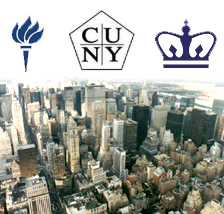|
Related: |
As New York’s public university — and the largest urban university in the country — the City University of New York has long been at the center of political battles over the role of a public university in a diverse metropolis.
Since 1847, when it was formed as the Free Academy, CUNY has sought to provide an affordable education to New Yorkers. Back then, the targeted audience was small – male graduates of city public schools – but as it grew, the school began gearing its mission to immigrants and offering practical training for jobs, providing evening courses, and helping to train World War II veterans.
Over the years, the government’s vision of how CUNY could best serve the city reflected changes in the political climate. For more than a century, the university was free – for much of that time it even provided books – but admission was limited. “You always had to be a good student, but it didn’t become tremendously competitive, as I see it, until the 1960s when you had to have a grade point average in the 90s to gain admission to the school of your first choice, ” said Sandra Roff, a professor at Baruch and one of the authors of “From the Free Academy to CUNY: Illustrating Public Education in New York City 1847 to 1997” .
That changed in the 1970s. Mounting political pressure and demands for equality by black and Latino New Yorkers spurred the university to guarantee admission to every New York City high school graduate. A few years later, faced by the fiscal crisis and by opposition to free tuition from political conservatives, the university began charging tuition. It also had to prune its budget -- cutting back on full-time teaching positions and spending on facilities.
The conventional wisdom has it that, by the 1990s, this had wreaked havoc. Mayor Rudolph Giuliani assailed the lack of standards at the university. In 1999, Benno Schmidt chaired a panel that called CUNY “an institution adrift.”
“A third of the campus presidencies were vacant and they couldn’t fill them,” said Neil Kleiman of the Center for an Urban Future. “No one would take the job. Nationally, CUNY was seen as the worse place you could go.”
Since then, the university ended remedial classes at the 11 four-year colleges, requiring the students needing them to take such classes at the six community colleges or elsewhere. A new chancellor – Matthew Goldstein – came in. He began restoring full-time faculty positions and issued a master plan . Students must pass a test – the CUNY Proficiency Exam – before they can move on to a third year at a senior college or graduate from a two-year school.
Many hail the results. Earlier this year, five years after he lambasted CUNY, Schmidt, now chair of the university’s board of trustees, called CUNY “the pride of the city.”
“The progress made by CUNY in the last five years has been stunning. I know of no comparable gains in such a short time in any public university system in the United States,” he said.
The university says that the SAT scores of incoming freshmen have risen and more students from the city’s best high school now view CUNY as a viable option.
While not disputing the university’s stature today, some say things were never as bad as Giuliani and other CUNY critics said they were. “Of course you can always have improvement,” said Councilmember Charles Barron, chair of the council's higher education committee, but the charges that the university was bad are “bogus...I think we’ve always had a quality degree.”
Others such as Dorothy Lang, an associate professor of business at the College of Staten Island and chair of the CUNY Association of Scholars, sees progress but says standards for four-year colleges could be higher still. She says that she has had students who did not have the background needed for her classes. For example, one young woman from Asia taking a management course was baffled by a problem involving driving a Chevy to Sears. She was simply unfamiliar with Chevys or Sears.
But some say that, if it is to fulfill its mission to the city, CUNY has an obligation to students like that. The faculty union, the Professional Staff Congress, has opposed the end of remedial classes at four-year school. “We are all for top quality education,” said union president Barbara Bowen, but, she added, “there is a reason for having an urban university, and the primary one is to serve that diverse population.”
Tuition increases may also keep some potential students away, although so far there is little evidence of this. Full-time students now pay $4,000 a year.
If student aid was cut, that could take its toll. With that in mind, Barron plans to mount a drive to restore free tuition. “When CUNY was white, it was free, “ he said, adding, “if CUNY could afford free tuition during the Great Depression it should certainly be able to today.”
Â





